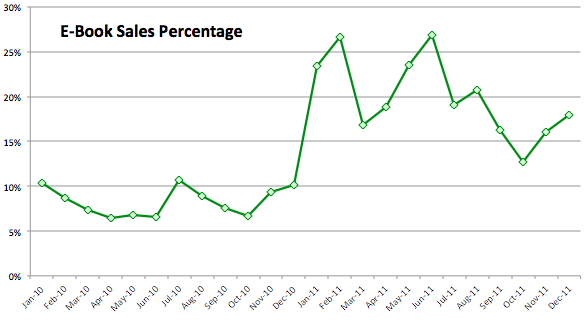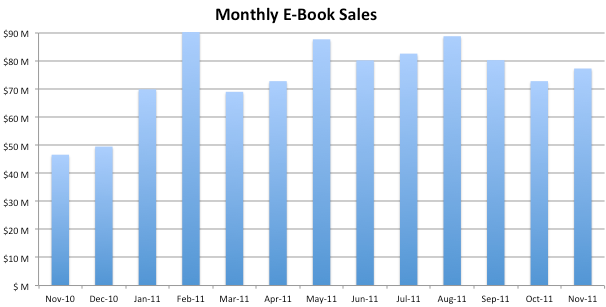I’ve talked before about self-publishing, how it’s been a huge boon to my writing career, but also how authors should temper their expectations: realize that writing, editing, designing a cover for, formatting and converting, and marketing a self-published book is a lot of hard work, and is less likely than the lottery to make you rich. (For that matter, traditional publishing is hardly a high-percentage method for getting rich, or even making a decent living.)
Of course, just like with the lottery, there are a few unvarnished success stories that provide something for independent authors to aspire to. The two most exceptional are independent authors John Locke and Amanda Hocking. This week, Amazon announced that Hocking joined Locke (along with 12 traditionally-published authors) in the “Kindle Million Club,” by selling over a million copies of their books in the Amazon Kindle Store. (Twilight author Stephanie Meyer attained that lofty mark this week as well.)
Hocking began as a self-published, independent author, and her runaway success led to her accepting a four-book deal with St. Martin’s Press (a subsidiary of Macmillan) worth over $2 million.
The most interesting thing to me about Amazon’s press release was this note:
In addition to the more than 2 million books sold by John Locke and Amanda Hocking, 12 KDP authors have sold more than 200,000 books and 30 KDP authors have sold more than 100,000 books.
(KDP stands for “Kindle Direct Publishing.” It’s the method by which self-published authors may upload their own works to be sold in the Kindle Store.)
So, how likely are you to strike it rich by self-publishing? There are now over 1,000,000 titles in the Kindle Store, and probably at least 100,000 self-published authors selling their books through KDP. E-books on Amazon are sold for a minimum of 99 cents per title (netting the author $0.35), while many independently-published e-books (including my own) are sold for $2.99 (netting the author about $2.05). So, if we assume 100,000 self-published authors, of that number:
- 2 authors (0.002%) have sold 1,000,000 books, earning at least $350,000
- 12 authors (0.012%) have sold 200,000 books, earning at least $70,000 (and possibly $410,000)
- 30 authors (0.03%) have sold 100,000 books, earning at least $35,000 (and possibly $205,000)
Of course, those dollar amounts are before taxes (yes, Amazon sends a 1099-MISC, so you have to pay income taxes) and any expenses for agents, editing, cover design, e-book conversion, advertising, web hosting, etc. And I think it’s fair to assume that the majority (probably the vast majority) of these high-selling titles were sold at 99 cents — I know almost all of John Lock’s titles were sold at $0.99 and most of Hocking’s were as well. So, 44 indie authors in the world have managed to make $35,000+ (before taxes and expenses) through selling e-books on Amazon — and we’re assuming each author may have written about 10 books, which would take several years, if not a decade or more. (Hocking has 11 books on Amazon, and Locke has 12.)
I’m not writing this to either convince you or dissuade you from writing a book, or trying to sell it on Amazon. I’ve long maintained that if you want to write a book, my best advice to you is to write it for yourself, because you enjoy the writing process and have a story to tell — assume you won’t make any money from it, and if you still yearn to write, then go for it. After that, you can decide if the potential monetary payoff is enough to offset the time, effort, and money you’ll spend, and the inevitable criticism you’ll receive by self-publishing. (For what it’s worth, even though I’m not yet one of the 44, I am glad of my decision to self-publish.) But I wanted to include the numbers above, which were the first I’ve seen that really specifically give us a clue as to how common these success stories are. They prove that it certainly is possible to “strike it rich” as an independent author, but it takes a lot of work, and the odds of you even making a living (let alone getting rich) are still quite low.









